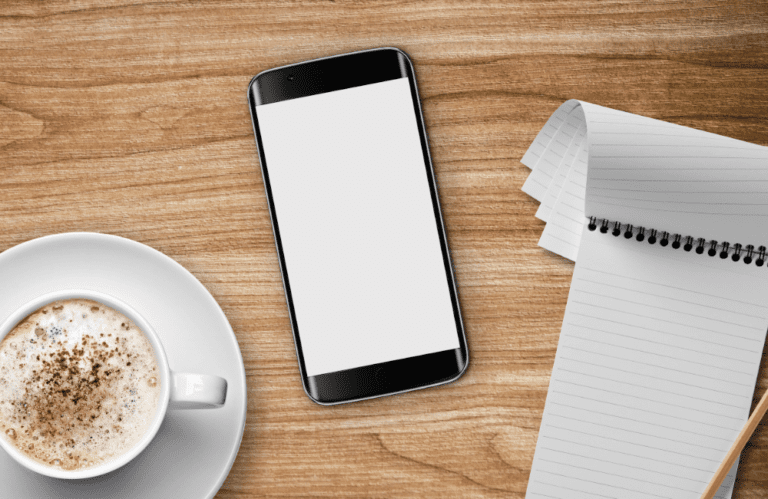Overwhelm is the rule, not the exception for ADHD brains — but with 5 science-backed resets, you can regain calm and focus.
My ADHD overwhelm often gets the best of me. It usually starts the same way: I’m hit with a wave of excitement about new ideas, a business strategy, a reorganization project, or the perfect digital filing system. In those euphoric moments, I genuinely believe I can accomplish “all the things“.
Then reality crashes in. That “I can do all the things” attitude is precisely why I overcommit myself into exhaustion, then end up resenting the very people who gave me these opportunities. The reality is no one forced my hand to do anything. I just never learned how to say no to my own ambitious brain.
Case in point: despite creating a beautiful “Life Dashboard” on my Google Drive with hyperlinks to all my important documents, I still manage to maintain a cluttered digital disaster zone like some kind of digital hoarder, excellent intentions but terrible follow-through.
Despite feeling like I have found my rhythm I still have my moments. I’m curious – does this cycle sound familiar to you? What’s your biggest source of overwhelm?
Breaking the ADHD Overwhelm Cycle
This cycle of excitement → overcommitment → overwhelm is exhausting, but it’s not inevitable. Here are 5 strategies that have helped me break free from chronic overwhelm.
Strategy 1: Group Similar Tasks to Reduce Mental Switching Costs
Think about your typical morning. You check email, then remember you need to make a doctor’s appointment, so you call them, then notice your coffee cup is empty, so you head to the kitchen where you see dishes that need washing. Before you know it, you’ve started four different tasks and completed none of them.

How to implement task batching:
When I first tried batching, I was shocked by how much less drained I felt.
My brain stopped ping-ponging between unrelated tasks, and I built momentum instead of fatigue.
This principle is built directly into Permission to Achieve™ System, where batching and quarterly planning reduce overwhelm before it even starts.
Strategy 2: Use Timed Work Sessions to Combat Time Blindness

The Pomodoro Technique has gained popularity among ADHD communities for good reason. According to PsychCentral, this structured approach particularly benefits people with ADHD because it provides external time awareness and prevents both procrastination and hyperfocus burnout.
Traditional Pomodoro suggests 25-minute work sessions followed by 5-minute breaks, but ADHD brains often need customization. Some of us can hyperfocus for 45-60 minutes, while others need shorter 10-15 minute sprints.
Getting started with timed sessions:
Choose one specific task you want to work on. Set your timer for a duration that feels challenging but achievable. If you’re new to this approach, start with 15 minutes rather than jumping straight to 25. Work on only that task until the timer rings, then take a genuine break.
During your break, step away from your workspace. Go outside if possible, do some stretches, or grab a healthy snack. Even brief movement increases blood flow to the brain and enhances mental clarity for the next work session.
The timer becomes your external accountability partner, helping you start overwhelming tasks and protecting you from hyperfocus exhaustion. This is why I’ve incorporated timed work sessions and built-in breaks into my quarterly accountability system.
Strategy 3: Limit Daily Priorities to Three Non-Negotiables
Most productivity advice gets this wrong for ADHD brains. Traditional to-do lists with 15-20 items create decision paralysis and overwhelm.
When everything feels urgent, nothing gets the focused attention it deserves.
Studies reveal that adults with ADHD show measurably different patterns in cognitive control processes. For ADHD brains dealing with executive function challenges, limiting daily priorities to just three items removes the cognitive burden of constant decision-making.
Choosing your daily three priorities:
Each morning, ask yourself: “If I could only accomplish three things today, which ones would move me forward most meaningfully?”
Consider impact over urgency. Choose tasks that align with your bigger goals rather than just putting out fires.
Make your three priorities specific and actionable. Instead of “work on presentation,” write “complete slides 1-5 of quarterly review presentation.”
This specificity helps your ADHD brain understand exactly what success looks like.
Write these three priorities somewhere visible and resist the urge to add more throughout the day. This principle of strategic limitation is central to my Permission to Achieve planner, instead of overwhelming yourself with countless goals, focus on just four meaningful objectives per year with clear quarterly milestones.
Strategy 4: Create Weekly Reflection Rituals That Build Momentum
One of the biggest challenges for ADHD brains is maintaining motivation over time. We’re great at starting things but struggle with follow-through, partly because we don’t always recognize the progress we’re making.
Weekly reflection creates the feedback loop our brains need to stay motivated and course-correct effectively. Reflecting regularly builds awareness of what’s working and what needs adjustment.
Building your reflection practice:

Set aside 15 minutes each week at the same time and place. Review your week with curiosity rather than judgment.
Ask yourself:
- What went better than expected?
- What challenges did I navigate successfully?
- Where did I get stuck, and what might help next time?
Focus on progress. Maybe you only completed two of your three daily priorities most days, but that’s still better than scattered attempts. These insights are valuable data, not failures.
Use voice-to-text apps if writing feels tedious. This practice helps you build self-awareness and creates positive momentum. The quarterly accountability system in my planner includes structured reflection prompts and ritual elements specifically designed to maintain motivation for ADHD brains.
Strategy 5: Connect Daily Actions to Your Bigger Why
ADHD brains are motivated by interest and personal relevance more than external pressure or arbitrary deadlines. When you lose sight of why something matters to you, it becomes nearly impossible to maintain focus and motivation.
Focus Keeper wrote and article on the method that confirms that structured approaches with personal meaning significantly improve focus and task completion for people with ADHD. Visualization and connecting to your “why” helps bridge this gap.
Making the meaningful connection:
Choose one of your current goals and get specific about why it matters to you. Instead of “I want to be more organized,” visualize what organized feels like in vivid detail. Picture yourself leaving work on time, having a calm evening routine, and waking up feeling prepared rather than panicked.
Connect this vision to your daily actions. When you’re tempted to skip your task batching or ignore your three priorities, remind yourself of that calm, organized feeling you’re working toward. The mundane tasks become stepping stones rather than random busywork.
Keep your “why” personal and intrinsic rather than focused on what others expect. This is why my quarterly planner includes money goal scaffolding and decision frameworks—to help you connect your daily actions to what truly matters to you.
Creating Sustainable Change for ADHD Brains

Of course, these five strategies are not about becoming a productivity robot or forcing yourself into neurotypical systems. They’re about creating structure that supports your ADHD brain while honoring your natural rhythms.
Start with one strategy that resonates most strongly. Maybe it’s the relief of limiting yourself to three daily priorities, or perhaps the structure of timed work sessions appeals to your need for external accountability. Give yourself permission to adapt these approaches based on what you learn about your patterns.
In my own journey, implementing these strategies didn’t eliminate challenges overnight, but gave me tools to navigate difficult days with more confidence and less exhaustion. Instead of swimming upstream, I began working with my brain’s natural tendencies.
Building new habits takes time, especially when you’re rewiring long-standing patterns. Be patient with yourself as you experiment and find your rhythm. The woman who can tackle complex projects and generate innovative solutions absolutely has the capability to create a sustainable daily routine.
If you’re tired of battling ADHD overwhelm with systems that don’t fit your brain, the Permission to Achieve™ planner was built for you.
Disclaimer: This content is for informational purposes only and is not intended as medical advice. Always consult with healthcare professionals regarding ADHD symptoms and treatment options.
Further Reading and Research Citations:
- Healthline – “ADHD and Task Switching: 10 Tips for Improvement” – https://www.healthline.com/health/adhd/task-switching-adhd
- Behavioral and Brain Functions – “Inefficient cognitive control in adult ADHD: evidence from trial-by-trial Stroop test and cued task switching performance” – https://behavioralandbrainfunctions.biomedcentral.com/articles/10.1186/1744-9081-3-42
- PsychCentral – “How to Wind the Pomodoro Technique for ADHD” – https://psychcentral.com/adhd/how-to-adapt-the-pomodoro-technique-adhd
- Focus Keeper – “How the Pomodoro Technique Helps ADHD Students Improve Concentration” – https://focuskeeper.co/blog/how-the-pomodoro-technique-helps-adhd-students-improve-concentration





